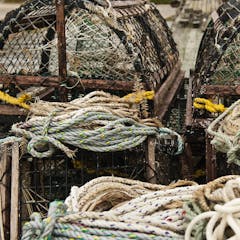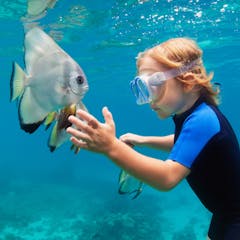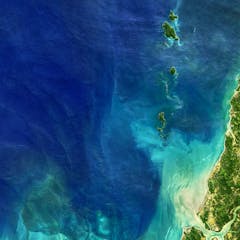
Articles on Oceans
Displaying 101 - 120 of 702 articles

Mining nodules from the deep ocean seabed could provide the metals crucial for today’s EV batteries and renewable energy technology, but little is known about the harm it could cause.

The idea we know more about the Moon than the deep sea is seductive – but it’s 70 years out of date.

To fish the oceans sustainably, nations must reduce bycatch, or accidental catches. But fishermen often resist changing gear or techniques that kill nontargeted species.

Sea-level rise isn’t the only climate-related problem for our coasts – extreme waves that cause flooding and erosion are also changing, but exactly how is hard to predict.

Swimming and surfing in the ocean is fun and invigorating. But sharing the water with animals comes with risks to us and them.

West Africa’s marine litter problem cannot be ignored. It can hinder the region’s economic and tourism growth, while putting people’s health at risk.

Humans are expert pattern-finders. But artificial intelligence tools are better at trawling through vast data sets to find anything from waste dumps to heat-tolerant corals.

Digital technologies have the potential to yield positive results, if co-developed and used ethically with Indigenous communities.

Some of the most powerful offshore wind is over water too deep for a standard wind turbine. Engineers found a way around the problem.

China’s international lending projects have big potential impacts on oceans and coasts. By cooperating more closely with host countries, Beijing can make those projects more sustainable.

On the border between India and Bangladesh, the Sundarbans suffer from overexploitation and rising sea levels. With a “Climate Wall” project, a virtual museum is raising awareness and increasing resiliency.

A study offers evidence that marine biology’s biggest stage is broken, and suggests ways to fix it.

A look back at hurricane history suggests we may be significantly underestimating future risks.

Our new, world-first research provides strong evidence of a significant increase in reef manta rays in protected areas of Raja Ampat over a decade.

Black corals provide critical habitat for many creatures that live in the dark, often barren, deep sea, and researchers are learning more about these rare corals with every dive.

In Europe, a large-scale war could cause the Baltic Sea to freeze over and severely compromise food security – potentially for decades and even centuries to come.

COP27’s agreement on observing the oceans sets a strong foundation for policymakers to invest in internationally linked observation that will help countries better monitor these carbon sinks.

Mangroves support a significant amount of biodiversity and their soils can capture a great deal of carbon.

There is only a single mooring managed by French researchers that monitors the impacts of climate change on West African Canary Current.

Standard marine protected areas with fixed boundaries can’t effectively shelter these ocean nomads.





